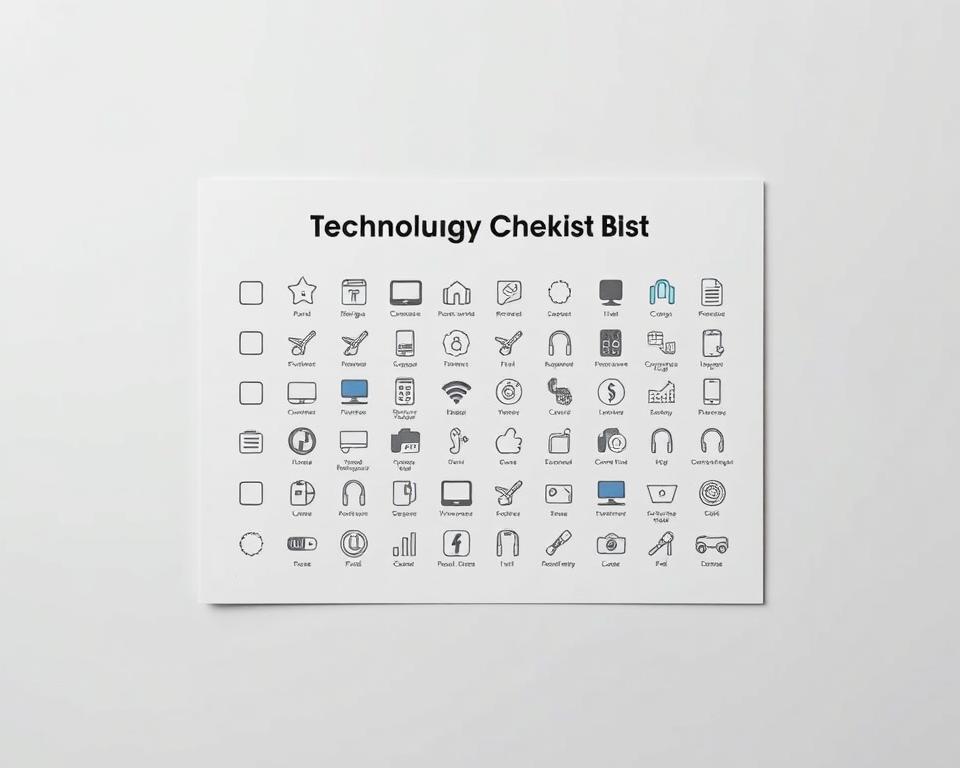Anúncios
apply technology 30min — can a short block of focused work move a real project forward? Yes, when you plan a tiny experiment and measure results. This guide gives strategic guidance, not guarantees, and asks you to run small tests, collect data, and iterate responsibly.
You will get a clear definition of what success looks like in one short block of time. The flow shows a minute-by-minute step so you can set up tools like iOS Screen Time, Android Focus Mode, a visual timer, or a work browser that blocks time sinks.
Practical, ethical, and simple: this short post focuses on quick wins for your writing and team work. Try one small sprint today, review objective signals, and scale only after you see real gains.
Why apply technology 30min matters today
Tight work windows change how you get answers. Short rounds force you to pick one clear outcome and one metric. That helps you ask focused questions and gather just enough data to move forward.
Context: Fast decision cycles reward quick experiments. Built-in reports like iOS Screen Time and Android Digital Wellbeing give you factual information on where your screen hours go. Use that level of insight to pick a starting point.
Anúncios
Relevance: balance devices with outcomes
You’ll connect phone, computer, and browser habits to real work without adding hours to your day. Visible time and soft limits reduce cognitive load so people can focus on one task at a time.
Compliance: guidance, not guarantees
This is a practical approach, not a promise. Screen controls and app limits cut interruptions for many roles, but real results vary by context and candidate. Use the method as information to iterate, not as a universal solution.
- Define one outcome, one metric, one time-box.
- Scan device reports for factual data before you start.
- Practice short sprints to mirror real meeting and review constraints.
Quick plan overview: what you’ll do in the next 30 minutes
Start by naming one small problem and one clear result you want by the end of this sprint. This keeps your minutes focused and makes review simple.
Anúncios
Set goals, configure tools, run the sprint, and review data. Keep expectations realistic. A single artifact or solved problem is a win.
Simple steps to follow
- Write one sentence that defines the problem and desired outcome.
- Pick one metric you can observe today, such as words drafted or a checklist completed.
- Set a timer, quiet your phone, and open a distraction-light browser profile.
- Run one focused block and produce one artifact or solve one problem.
- Capture a quick before/after snapshot of data and jot a short list of observations and questions.
“Small, repeatable sprints beat vague promises. Measure and decide.”
Example: use this mini guide as a checklist you can copy today. At the end, choose: stop, ship, or schedule another block based on the details in front of you.
Set up your environment: phone, computer, and browser in minutes
Quickly set a calm, focused environment on your phone and computer so you can get to work fast.
Phone settings: iOS Screen Time limits and Android focus modes
On iPhone, open Settings > Screen Time to set App Limits for entertainment and social categories. Schedule Downtime so the screen stays quiet during your sprint.
On Android, go to Settings > Digital Wellbeing > Focus Mode to pause selected apps. Add a quick tile so you can toggle focus in seconds.
Computer and browser: “work browser” profiles and site blocking
Create a separate work browser profile in Chrome or Edge that signs in only to necessary services. Install a lightweight blocker (for example, BlockSite or LeechBlock) to limit time-sink sites during a session.
On your computer, disable nonessential notifications and close auto-refreshing tabs so the screen stays calm while you work.
Visual timers: using a Time Timer or on-screen timer for focus
Use a visual product like the Time Timer MOD or an on-screen countdown so you always see remaining time without checking your phone. This simple cue keeps you on task.
- Prepare a tiny checklist: timer on, focus mode on, work profile open, doc ready.
- Keep the setup ethical: whitelist critical contacts and avoid tools that block accessibility.
- Track simple data and one change to test the next day.
“Treat tools as options, not absolutes; choose the least complicated combination that supports your current sprint.”
Minute-by-minute guide: a 30-minute focused technology sprint
Follow a tight minute-by-minute timeline to turn a single problem into measurable progress.
Minutes 0-5: set the goal and metrics
Write the problem in one sentence and name the desired outcome. Pick one metric so success is visible, for example words drafted, rows added, or bugs reproduced.
Note your data points (before counts) and any constraints. Ask two clarifying questions to avoid building the wrong thing.
Minutes 6-20: do one focused step
Choose a single step—draft an intro, build a small table, or write a test query. Keep your window free from tab hopping and new tasks.
Keep your phone controls active. If a thought threatens to derail you, park it in a short list to handle later.
Minutes 21-27: test and capture results
Test your output against the metric. Capture data such as word count, query runtime, or checklist progress.
If you get blocked, write the smallest question you would ask a teammate so you can resolve it after the sprint or on a scheduled call.
Minutes 28-30: summarize and decide
Summarize what worked, what didn’t, and the next step. Decide to stop, ship, or schedule another block and put it on your calendar.
Add one small improvement to try next time, like refining timer length or reducing open tabs so learning compounds across days and hours.
- Throughout: keep the flow lightweight—short notes, a tiny checklist, and a named metric so your energy stays on work.
- End handoff: leave a dated note with the current state, the next name to consult, and the exact time of your next sprint.
“Small, measurable windows make decisions easier and learning faster.”
Focus methods that work in short windows
Short bursts of focused work can sharpen your attention and produce real output. Use a clear goal and a visible timer so work feels finite and manageable.
Pomodoro-style time-boxing and why it boosts focus
The Pomodoro method uses short, timed sessions to cut context switching. You work for a set span, then take a pause. This reduces mental overhead and keeps your focus at a higher level.
- Pick a window that fits the task—25 minutes is common, but shorter blocks can work.
- Use a visual countdown so progress feels concrete and energy stays steady.
- Separate planning from doing so execution remains uninterrupted.
Single-tasking rules: one window, one goal, one outcome
Turn one open window into one result. Close extra tabs, silence notifications, and name the outcome before you start.
- If an intrusion appears, capture it on a quick note and resume the block.
- Match block length to your ability: drafting may need one block; analysis may need two.
- Try small adjustments—headphones or standing—to protect attention in a simple way.
“Treat methods as options; experiment and choose the way that fits your work.”
Reduce distractions: practical controls for screens and sites
You can test modest screen limits today and keep the tools you need for real work. Start small and treat this as an experiment you run for one day.
Identify your biggest time-sink apps and sites and set temporary limits during sprints so focus improves without cutting off essential tools.
Block time-sink apps and websites without breaking your workflow
On iOS, add specific apps to Screen Time limits. On Android, pause selected apps with Focus Mode so your phone stays quiet while you work.
Create a separate work browser profile and use a lightweight blocker like LeechBlock, BlockSite, or 1Focus to reduce random browsing.
- Make an allow-list for work-critical services so you keep access to what matters.
- Pause notifications selectively so you remain reachable for urgent matters.
- Keep a short list of friction points and adjust settings in small steps.
Test the setup for one day, note negative side effects, and tweak limits. Document what helps most and carry those ways into future sprints.
“Choose ethical controls that support your role—limit distractions, not responsibility.”
Apply the sprint to real work examples
Use one short sprint to turn a specific task into a visible result you can share. Below are clear examples you can copy for a single block of focused work. Each example ends with a short reflection so you can iterate.
Writing: drafting a blog post intro and outline
In one block, draft a quick post intro and a 3–5 point outline. Count words written and check clarity against your purpose.
Measure: words and a short clarity score. Note two questions to answer later.
Data and analytics: setting up a quick metric view or table
Build a simple table that shows one metric by day or segment. Record the query, sources, and any missing data.
Measure: rows completed and gaps found. Add a note on assumptions for later validation.
Team tasks: preparing a brief, call agenda, or candidate review
Draft a one-page brief or a timed call agenda. Include owners, decisions needed, and a short list of open questions.
For candidate reviews, make a consistent criteria list and score profiles in separate blocks. Finish with a quick reflection and a scheduled follow-up.
“Keep scope tight: one artifact per block so problems stay solvable and progress is visible.”
Technology choices: pick the right tool for the job
Choose a simple tool you already know so setup doesn’t eat your sprint time. When minutes matter, familiarity helps you focus on the problem, not on configuration.

Language, app, or product selection: favor what you use daily. For code tasks, pick a language you can write fast — Google commonly allows Java, C++, Python, Go, or JavaScript in interviews. Python is concise; use Java or C++ only if you are fluent.
Lightweight applications for rapid progress
Use a text editor for drafting, a spreadsheet for small data tables, or a notes app for checklists. Keep one tool per task to avoid context switching.
- Ask one decision question: “Can I deliver the outcome in this tool today without extra setup?”
- Document minimal data hygiene: file names, a brief version note, and one line about sources.
- Prefer shared, simple products so candidates and teams move faster together.
Progress beats perfection: choose the least complex option that gets results.
Measure performance: simple analytics in minutes
Pick one clocked measure and one output to keep reporting light and useful. This makes results visible and keeps you honest about effort.
Define time and output metrics you can track today
Choose a single time measure (block length or elapsed focus time) and one output, such as words drafted, rows added, or issues found. Record before and after counts so your data is clear.
Use timers, checklists, and browser history to validate effort
Start a timer for your block (for example, 25 minutes). Keep a short checklist and use browser history or screen activity on your computer to spot distractions.
Log learnings: what worked, what didn’t, what to try next
In two minutes, answer three reflection questions: what worked, what didn’t, and what to try next. Name files and notes with a clear date and sprint name so comparisons across a day or week are simple.
- Small table: create a tiny table with Start, End, and Delta counts to show progress.
- Keep information lean: only track data you will actually review.
- Example: writing — words; analytics — rows/queries; team prep — agenda items done.
| Start | End | Delta |
|---|---|---|
| 100 words | 420 words | +320 |
| 5 rows | 18 rows | +13 |
| 0 items | 3 items | +3 |
“Measure simply, learn quickly, and let small wins guide your next sprint.”
Team-level use: align people, screens, and steps
Agreeing on a few shared rules makes group sprints fast and low-friction. Start with a short, common plan so everyone knows the goal, the owner, and the definition of done for a single window.
Shared sprint rules, roles, and windows
Keep coordination light and optional. Define who drives, who records data, and who prepares the next list. Rotate the driver so each candidate gets an equal opportunity to lead.
- Pick a recurring day and a short call to kick off or close sprints without creating meeting bloat.
- Create a tiny team template with steps, metrics, and follow-ups so handoffs stay smooth.
- Align device focus settings across people for the shared window, but keep critical channels open for urgent items.
Capture open questions and assign owners before you log off. End each sprint with a quick review: wins, blockers, and the next small step. This ritual keeps the whole team moving at the same level and makes every short block an opportunity to make forward progress.
“Small, shared rules let you scale short work windows into reliable team momentum.”
Ethics, accessibility, and responsible use
Set transparent expectations up front so focused windows respect people and needs. Treat controls and tracking as optional tools that must be explained and agreed on.
Respect privacy, inclusivity, and safe work practices
Consent matters: before you collect any session data, tell your team what information you will record and why.
Keep tracked metrics minimal and relevant. Only store data needed to improve workflow and remove identifiers when possible.
Accommodate different ability levels. Make sure blockers or timers never disable required accessibility features or critical alerts during the day.
- Privacy: limit recorded fields and keep sensitive notes in approved storage.
- Inclusivity: offer alternate ways to join a sprint for people with different needs.
- Safety: check ergonomics and suggest short breaks so focus doesn’t harm well‑being.
- Transparency: answer questions openly and document norms for shared use.
- Confirm consent and scope before a sprint.
- Review app permissions and remove unused access regularly.
- Log learnings and update norms so practices stay inclusive and compliant.
“Responsible controls support work and people — not the other way around.”
Conclusion
,Finish the session by capturing two insights and one concrete action for tomorrow.
You’ve seen how a short, structured sprint helps you ship small work and learn from objective data. Use a tiny checklist, a visible timer, and phone focus modes to keep attention sharp.
Keep metrics light so you can answer the right questions without overhead. End each block with a dated note and a short list of next steps.
This guide encourages responsible creativity and steady iteration. Try one block today, share your ideas with colleagues, and treat each end-of-day reflection as an opportunity for repeated learning.



